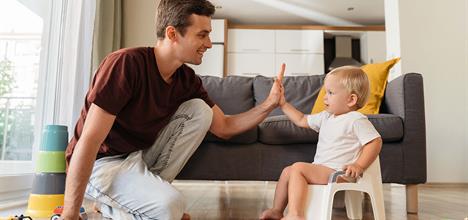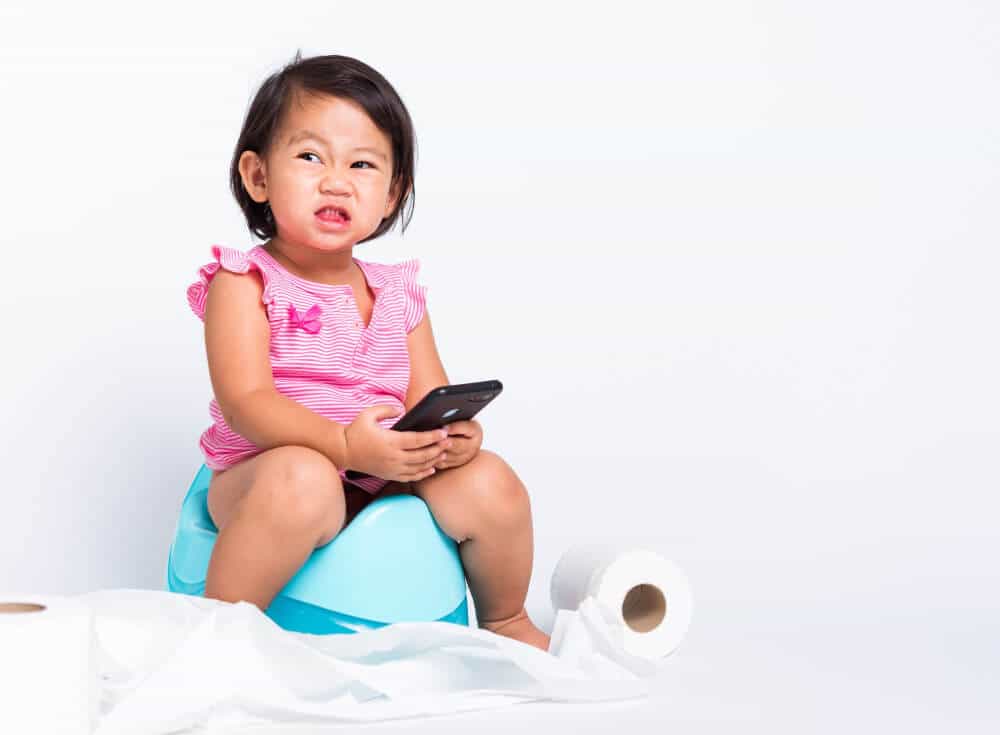Potty training toddlers can feel like a big task. It’s a significant milestone for both parents and children.
Starting potty training can be challenging. It requires patience, consistency, and understanding. Every child is different, so what works for one may not work for another. Parents often seek advice to make this process smoother. This blog will provide practical tips to help you succeed in potty training your toddler.
You’ll find strategies that can turn this daunting task into a manageable one. Let’s dive into these helpful tips and make potty training a positive experience for your family.

Credit: www.healthychildren.org
Getting Started
Starting toddler potty training can be a smooth journey. Use positive reinforcement and be patient. Celebrate small successes.
Potty training your toddler can feel like a daunting task, but with the right approach, you can make it a smooth and successful experience. Getting started is crucial, as it sets the tone for the entire potty training journey. Below, you’ll find some practical tips to help you begin on the right foot.
Choosing The Right Time
Timing is everything when it comes to potty training. Look for signs that your child is ready, such as staying dry for longer periods, showing interest in using the toilet, or being able to follow simple instructions.
It’s also important to consider your family’s schedule. Avoid starting during stressful times like moving to a new home or the arrival of a new sibling. Choose a period when you can dedicate time and patience to the process.
Don’t rush it. Every child is different, and starting too early can lead to frustration for both you and your toddler. Wait until they show clear readiness cues.
Preparing The Essentials
Gather all the necessary supplies before you start. A child-sized potty chair or a potty seat that fits on your regular toilet can make the experience more comfortable for your toddler.
Stock up on training pants or pull-ups, and easy-to-remove clothing. This will make bathroom trips quicker and less stressful.
You might also want to create a potty training chart with stickers or rewards for positive reinforcement. This can motivate your child and make the process more fun.
Books and videos about potty training can be helpful tools. They provide a visual aid and can make the concept more relatable for your child.
Remember, the goal is to make potty training a positive and encouraging experience. Equip yourself with patience and a good sense of humor, and you’ll be well on your way to success.
What are some signs your toddler is ready for potty training? Share your experiences in the comments!

Credit: www.kidsensetherapygroup.com
Techniques For Training
Effective techniques for toddler potty training include establishing a consistent routine. Positive reinforcement helps encourage desired behavior. Patience and praise are key to success.
Potty training your toddler can feel like a daunting task. However, with the right techniques, you can make the process smoother and more enjoyable for both you and your child. Let’s dive into some effective techniques for training your toddler.
Using Positive Reinforcement
Positive reinforcement is a game-changer. It encourages your toddler to repeat good behavior. Celebrate their successes, no matter how small.
For instance, when your child uses the potty successfully, offer praise. A simple “Great job!” or a sticker can work wonders. Rewards like a small toy or extra playtime can also motivate them.
Avoid punishments for accidents. They are part of the learning process. Instead, focus on what they did right and encourage them to try again.
Establishing A Routine
Consistency is key. Establishing a routine helps your toddler understand what is expected. Set regular times for potty breaks.
Incorporate potty time into their daily schedule. For example, try after meals, before naps, and before bedtime. This helps create a habit.
Involve your child in the process. Let them pick out their potty seat or underwear. This gives them a sense of ownership and excitement.
If accidents happen, stay calm. Gently remind them to use the potty next time. Consistency and patience will pay off.
What techniques have worked best for you? Share your experiences and let’s help each other succeed in this important milestone!
Common Challenges
Potty training toddlers can be challenging, with common issues like accidents and resistance. Stay patient, and consistency is key.
Potty training your toddler can be a rollercoaster ride filled with highs and lows. Many parents face common challenges that can make the process seem daunting. Understanding these obstacles and knowing how to tackle them can make all the difference.
Handling Accidents
Accidents are a normal part of potty training. They can happen even after your child has been doing well for a while.
Keep calm and clean up without making a fuss.
Encourage your child by saying something like, “Accidents happen. Next time, let’s try to get to the potty sooner.”
Consistency is key. Ensure your child knows it’s okay and that you’re there to support them.
Dealing With Resistance
Some toddlers resist potty training. They may refuse to sit on the potty or insist on wearing diapers.
Try to understand their point of view. They might be scared or simply not ready.
You can make it fun by letting them choose their potty or underwear. Offer praise and small rewards for effort and progress.
Ask yourself, “Is there a pattern to their resistance?” Knowing when and why they resist can help you address the root cause.
Remember, patience and positivity can turn challenges into successes. You and your toddler are a team, and together you can navigate this journey smoothly.

Credit: www.cpcmg.net
Frequently Asked Questions
What Are The Three C’s Of Potty Training?
The three C’s of potty training are Consistency, Communication, and Comfort. Maintain a routine, clearly explain the process, and ensure your child feels at ease.
What Is The 10-10-10 Rule For Potty Training?
The 10-10-10 rule for potty training involves taking your child to the potty every 10 minutes for 10 seconds. Repeat this for 10 days to help establish a routine.
What Is The 3 Day Potty Training Trick?
The 3-day potty training trick involves dedicating three days to teach your child to use the toilet. Stay home, observe them closely, and encourage regular bathroom visits. This method aims for quick results through consistency and positive reinforcement.
What Is The Average Age A Child Should Be Potty Trained By?
Most children are potty trained between 18 months and 3 years old. Every child is different, so ages may vary.
When Should I Start Potty Training My Toddler?
Most toddlers are ready between 18-24 months. Look for signs like staying dry for hours.
Conclusion
Successfully potty training your toddler requires patience and consistency. Celebrate small wins. Keep a positive attitude and stay calm during setbacks. Every child learns at their own pace. Create a routine and stick to it. Use rewards and encouragement to motivate them.
Remember, accidents are part of the process. Stay supportive and understanding. With time and effort, your toddler will master potty training. Enjoy this journey and cherish the progress they make. Soon, diapers will be a thing of the past. Happy potty training!
Read More:

